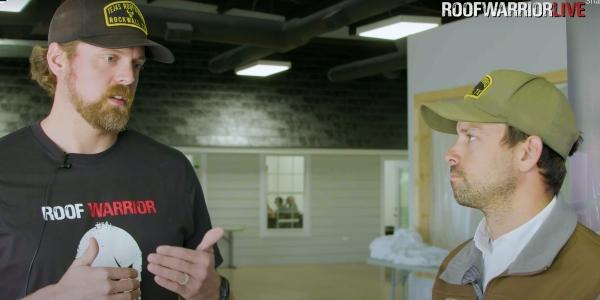Why service matters: The overlooked engine driving roofing business success
June 3, 2025 at 3:00 p.m.By Jesse Sanchez.
Service isn’t just a division, it’s a strategic lever that drives long-term growth, ensures stability in shifting markets and builds a durable competitive edge through lasting customer relationships.
In the high-stakes, fast-moving world of commercial roofing, production often gets the spotlight. But behind the scenes, another engine is quietly driving profitability, resilience and customer loyalty: service and maintenance.
Service is often treated as an afterthought by roofing companies — something to squeeze in between reroofs, handled by whoever’s free. But today, the firms making real gains are those treating service not as a sideline, but as a strategic pillar.
In a market shaped by economic ups and downs, supply chain disruptions and shifting customer expectations, service is emerging as the most reliable way to build year-round revenue, deepen client relationships and keep a business balanced when project work slows down.
The shift from reactive to strategic
Reactive service, scrambling to patch leaks, sending invoices when there’s time and hoping for repeat calls is common. It’s also a dead-end. What sets serious service departments apart is structure, specialization and a growth mindset.
“In a good economy, service is important. In a bad economy, service is vital,” says Tracey Donels, founder of Service First Solutions and a leading consultant helping roofing contractors start and expand commercial service divisions. “Service is all about capacity. Do we have time to address the customer’s need?”
Tracey compares most small roofing service teams to food trucks — nimble, but limited. If you’re doing it all yourself: scheduling, estimating, invoicing. That’s not sustainable. The goal, he says, should be a system more like a high-performing franchise. Think streamlined roles, predictable turnaround and scalable operations.
A loyalty engine in disguise
A professional service department isn’t just about fixing roofs. It’s about building trust. The contractor who shows up consistently, communicates clearly and solves problems fast becomes the first call, not just for repairs, but for full replacements down the road.
“Very few people in their daily lives fire a service provider that they like and that does good work,” Tracey explains. He compares it to personal loyalty in everyday life: “My wife likes her hairdresser. She does good work. Doesn’t matter what the price is. If we go in and it’s an extra $30 this month, guess what? We’re paying an extra $30.”
This creates a flywheel effect. Great service leads to repeat business. Repeat business leads to bigger jobs. Bigger jobs come faster and easier because the relationship is already in place.
Small teams, big impact
Tracey recommends even the smallest service divisions start with two dedicated team members, one in the field and one in the office.
Why two? Because service is about capacity. Someone needs to take the calls, schedule the work, manage documentation and invoices and keep the ball moving. When the same person is juggling all of that with production responsibilities, service becomes slow, scattered and costly.
A dual-role setup works best when it blends skill sets: one person with strong technical roofing knowledge, another who’s process-oriented and tech-savvy. That balance allows a team to be both responsive and organized.
Track the right numbers
To grow a service division, you have to measure it. Tracey stresses five core weekly metrics:
- Bids delivered
- Total bid value
- Outstanding bids owed
- Approved but incomplete work
- Unsent invoices
Tracking these reveals bottlenecks fast. Are you selling but not closing? Estimating too slowly? Sitting on completed jobs that haven’t been billed? Numbers answer those questions before customers start complaining or disappearing.
Turn leak calls into revenue
Here’s a commonly missed opportunity: the follow-up. A roof leak is usually a symptom, not a one-time issue. Tracey recommends using every leak visit as a springboard to offer preventive repairs or maintenance plans.
“We didn’t go out and get any new customers,” Tracey says, explaining how growth can come from existing relationships. “We recommended work on existing leak calls and preventive maintenance plans on existing buildings we’re working with or roofs that we’ve put the roof on.”
That includes reviewing dormant warranties, reaching out to clients you haven’t serviced in years and offering them structured maintenance plans, something insurance carriers are increasingly rewarding.
The peer effect
As companies grow their service arms, they face new challenges: team structure, communication breakdowns, sales strategy, tech integration. That’s where peer groups come in.
Tracey runs national peer cohorts. Non-competing contractors who meet regularly to share what’s working, what’s not and how they’re solving problems. For many participants, it’s their first time having true peers who understand the complexity of running a service division.
“There are so many ways to be successful,” Tracey says. “If we don’t come to a place like this where we have like-minded people sharing ideas, we just may not get there.”
Service isn’t optional anymore. It’s the foundation. In uncertain markets, it pays the bills. In strong markets, it unlocks the next level of growth.
Watch for the next one in our series, where we’ll break down how to build the structure that supports scalable, profitable service operations, whether you have one truck or 10.
Learn more about Service First Solutions in their Coffee Shop Directory or visit www.growroofservice.com.

About Jesse
Jesse is a writer for The Coffee Shops. When he is not writing and learning about the roofing industry, he can be found powerlifting, playing saxophone or reading a good book.






















Comments
Leave a Reply
Have an account? Login to leave a comment!
Sign In